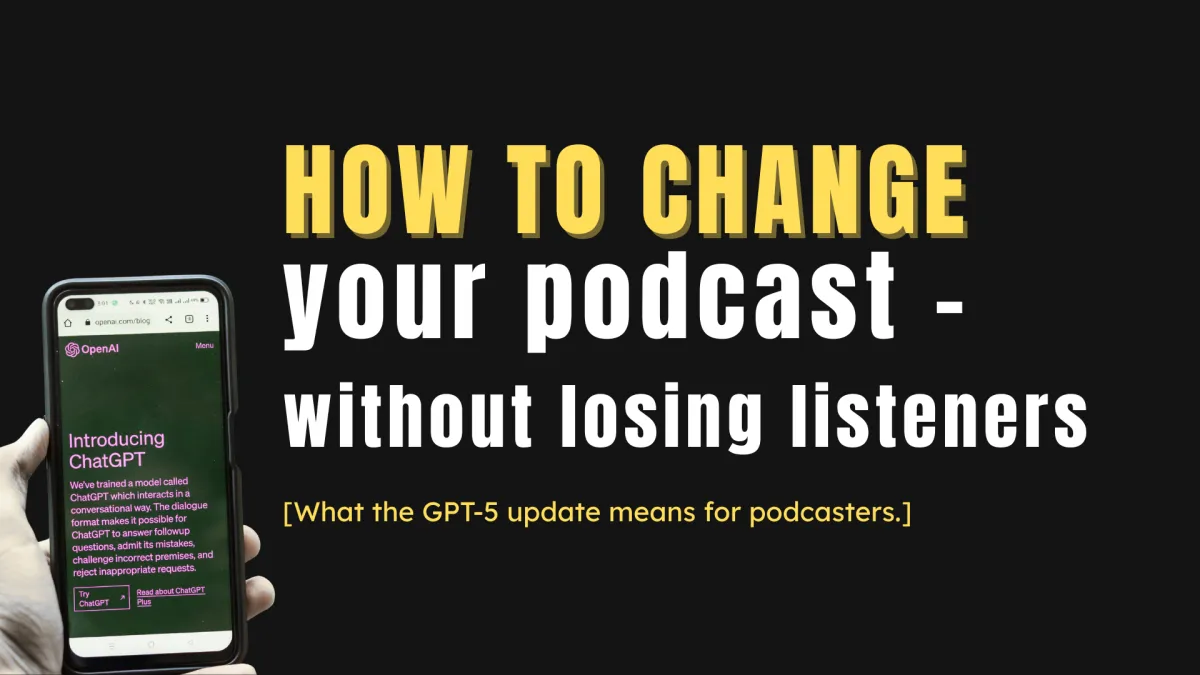
Podcast Change: How to Keep Listeners When You Shift
Last week, GPT-5 rolled out. I knew an upgrade was coming.
What I didn’t know was that it would rewrite the custom GPT “voices” I’d been working with for some time. They weren’t just tools; they’d become trusted sounding boards. I’d leaned on them for big business decisions, brainstorming, even personal gut-checks.
And here’s the part most people won’t admit: sometimes I confided in them more than my business partner.
Then — overnight — the custom voice was gone.
No warning. No opt-out. Just…different.
The 'trust' I’d built with that AI didn’t just fade — it fractured.
And yes, I know some people will say I’m a fool for 'trusting' AI. The fact is, AI was more accurate, reflective, consistent, and useful than some of the highest-paid coaches I've hired.
Why is this a podcast problem?
Listeners click “play” for the topic, title, or cover art…but they stay for the host.
They build a deep, almost personal connection with your voice, your rhythm, and your way of showing up for them.
When you change that without preparing them, you’re asking them to rebuild the relationship from scratch.
Some will. Many won’t.
The 3-Step Playbook to Change Without Breaking Trust
1. Signal Early
People don’t like surprises in their listening experience (unless it’s a bonus episode).
If you’re:
Introducing a new co-host
Switching formats
Shifting topics…tell them before it happens.
Worst of all, episodes turn into a QVC episode, mid-conversation ads for mattresses and tyres - on a health podcast.
Most listeners aren’t against change. They’re against change that makes the experience worse.
Example: Instead of dropping a new co-host cold, mention them on a few episodes, tease their first appearance, and frame it as a trial:
“Next week, you’ll hear from someone I think you’re going to love — we’re testing what it’s like to host together.”
Early signalling makes change feel like an invitation, not an imposition.
2. Anchor With Familiarity
If you’re moving one piece, keep the others steady. Listeners need something to hold onto while they adjust.
Keep your intro music and tone the same while changing episode structure.
Maintain your release schedule while experimenting with content style.
Hold onto your Q&A segment while you test new interviews.
It’s the equivalent of renovating one room in a house while leaving the rest livable.
3. Lead With Value
If you want your audience to embrace a change, show them how it benefits them first.
Partnership example: A show I worked with wanted to partner with a fitness brand. Instead of dropping discount codes mid-episode, they invited the founder on to share genuinely useful training tips.
The following week, they said:
“Your feedback on last week’s episode was so strong we’ve decided to partner with them to help you reach your goals.”
The result?
No backlash.
No “why is this here?”
Higher conversions because the partnership started with value, not a sales pitch.
The bottom line
Change isn’t the enemy. Careless change is.
Your audience will give you space to grow if you make them feel like they’re part of the journey.
Want to turn your own podcast into a platform that gets paid? We've got 1 coaching spot open starting mid next month. Let's connect and see if we can help you → Book your free 15-minute Fit Call.

